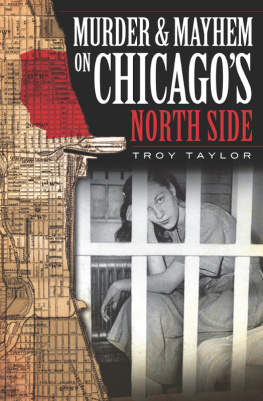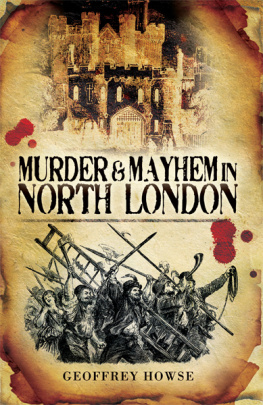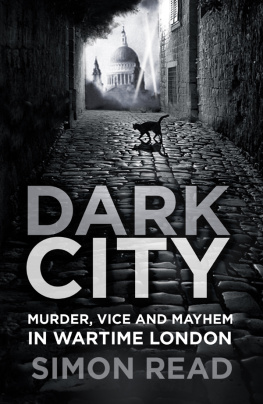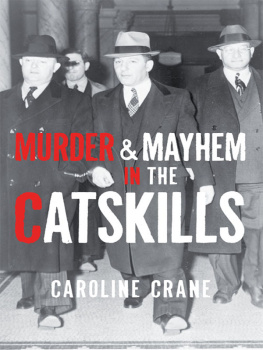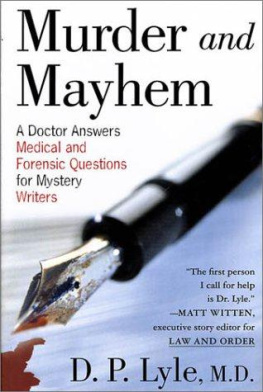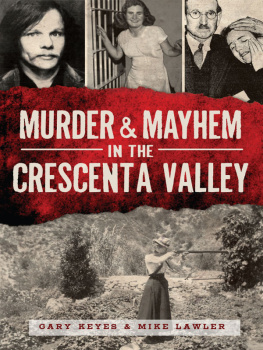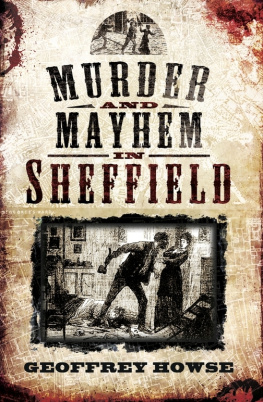Published by The History Press
Charleston, SC
www.historypress.com
Copyright 2018 by Keith Roysdon and Douglas Walker
All rights reserved
Front cover, top: Muncie Newspapers; bottom: Ball State University Digital Archives.
First published 2018
e-book edition 2018
ISBN 978.1.43966.426.1
Library of Congress Control Number: 2017963916
print edition ISBN 978.1.46713.890.1
Notice: The information in this book is true and complete to the best of our knowledge. It is offered without guarantee on the part of the authors or The History Press. The authors and The History Press disclaim all liability in connection with the use of this book.
All rights reserved. No part of this book may be reproduced or transmitted in any form whatsoever without prior written permission from the publisher except in the case of brief quotations embodied in critical articles and reviews.
INTRODUCTION
Like many cities, Muncie, Indiana, has its light side and its dark side. The dark side is a place where murder is committed, where heinous acts are carried out against the defenseless and innocent. It is where hate dwells.
The light side is where good men and women work hard and play hard but sometimes fall victim to the darkest urges of those around them. When that happens, police and prosecutors move to see justice done.
Sometimes, that split between light and dark, good and evil, hero and villain, is a matter of perspective. Depending on where you stand, as well as your understanding of a person and their history, they can seem to be dastardly or heroic.
There is no better example in Muncies history than Jules LaDuron, a figure of legend in the city. LaDurons life spanned much of the twentieth century and some of its most notorious events, including the still-unsolved disappearance of his wife and the night two men came to his medical office with menace in mind.
While LaDurons life can be reduced to a few milestones of violence and death, he was much more: a physician, a sportsman, a loving grandfather, a member of Muncies pioneering NFL team and a man remembered by neighbors for his kindness and caring for others.
Another Muncie figure of legend is one of LaDurons contemporaries, George Dale, a newspaper publisher and one-time mayor. Dale was known for the political battles he waged through his newspaper, but his legend lives on for his fight against the Ku Klux Klan, a fight waged at risk to his own life.
This book tells true stories of legends like LaDuron and Dale, but also people whose only fame came when their names were splashed across newspaper pages in lurid headlines, when photos showedin black and whitethe pools of blood where their bodies lay.
These were people made victims in Muncies smallpox epidemic; those cut down in the citys dangerous taverns; those who received a taste of mountain justice after a womans honor was besmirched; and the Muncie cop cut down in a senseless killing.
Muncie had the best and worst to offer, from the police officers who roamed and robbed, to the officers who spent years tracking down the killer of a lonely woman.
Muncie, Indiana, is the stuff of legends, of heroes and villains, of murder and mayhem.
THE CITY EVERYONE SHUNNED
In 1893, Lizzie Borden was found not guilty of murdering her parents in Massachusetts. Also that year, the Indiana, the first battleship of its kind in the U.S. Navy, was launched. Arthur Conan Doyle killed off his creation, Sherlock Holmes, at the hands of villainous James Moriarty in The Final Problem.
In Muncie, a city not yet thirty years old and experiencing growing pains, Dr. Frank Jackson had an alarming problem.
Jackson had been named the citys first health officer, a position for which he was paid $400 a year. At thirty-four, he was a young physician compared to others in Muncie. He was bucking his elders, then, when he suggested that the cases of chickenpox the city was seeing were not chickenpox. The illness was smallpox, and it was deadly.
Not that Jackson could convince some people of his diagnosisat least not at first. Before Muncies smallpox epidemic of 1893 was beaten back, reputations were won and lost, an entire portion of the city was quarantined and neighbors spread the disease not only through ignorance and arrogance but also malice.
Muncie and Delaware County were undergoing a boom just as smallpox broke out. It wasnt the first time smallpox was found in the city, and it wouldnt be the last, but the epidemic of 1893 was notable because of its virulence and because of how the city reacted.
In 1893, Muncie was growing. Many of its twenty-two thousand residents had come from the southern United States, looking for work. They were the first wave of people looking to make their fortuneor at least a good livingin Muncie. The discovery of natural gas in the Midwest in the 1880s brought speculators and developers, would-be industrialists and the workers they needed.
A smallpox patient like those in Muncie, Indiana, during the smallpox epidemic of 1893. Library of Congress.
The Ball Brothers, container makers from New York, were searching Ohio in 1886 for a possible factory site when a Muncie businessman contacted them and offered to show them around the town. By 1888, the Ball Brothers were settled in Muncie after accepting incentives that included $7,500, free land for their factory, a railroad siding and a supply of natural gas, free of charge, for five years. By 1893, the Balls were making nine million home food canning jars a year in Muncie.
Although the Balls manufacturing dominanceand influencein Muncie would last for decades, the natural gas supply did not. Natural gas wells were left to burn around the clock because the powers that be believed that gas would last for seven hundred years. It did not. By the early 1900s, the natural gas supply was exhausted.
But in 1893, the city was riding high on the seemingly inexhaustible supply of fuel and the workers attracted by the citys burgeoning industry. With them came their children: Muncies schools, which had begun in the city even before the city was incorporated, had several thousand students by 1893. The first high school had opened in 1881, and in 1893, Blaine School, the latest of several school buildings, opened.
The children of Muncie, unfortunately, were the easiest targets of smallpox.
It was August 1893, and the Delaware County Fair, an annual event that draws the towns residents to this day, was underway. According to William G. Eidsons 1990 article Confusion, Controversy and Quarantine: The Muncie Smallpox Epidemic of 1893, as many as ten thousand fairgoersnearly half the citywere enjoying horse races and hot-air balloons.
Instead of enjoying the fair, Doctor Jackson was making a house call at the Macedonia Avenue home of Thomas Murray and his family. Dr. Robert Bunch, whose son Rollin would later be mayor of Muncie, had diagnosed the Murray family with chickenpox.
Jackson doubted the diagnosis of the forty-one-year-old, well-established Bunch, however, and was worried that the high fever and skin eruptions were symptoms of smallpox, not chickenpox. Jackson contacted the Indiana State Board of Health, and Dr. Charles Metcalf came to Muncie and confirmed that the illness was smallpox.





